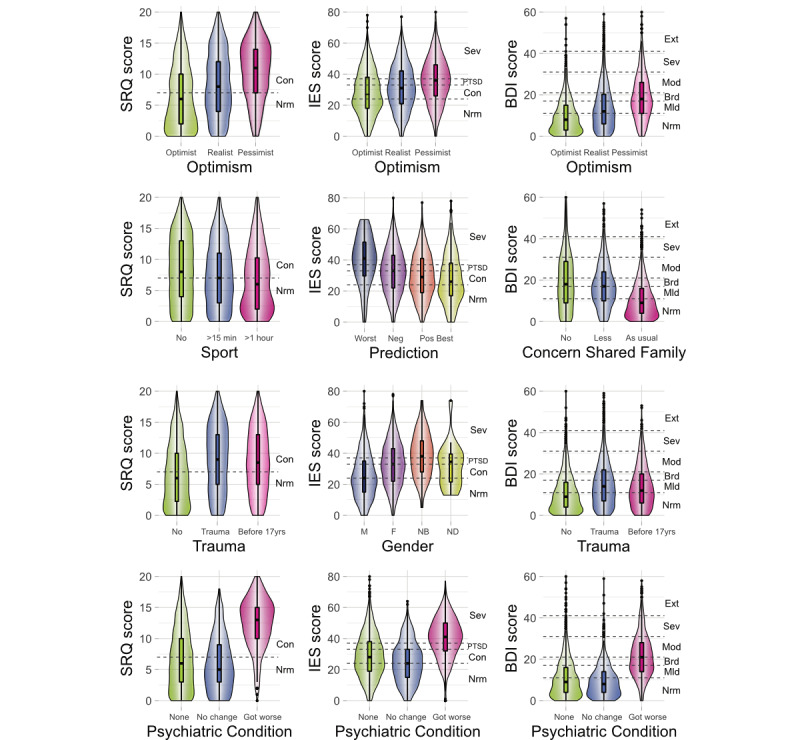Figure 3.

Violin plots indicating the effects of selected factors on general psychological disturbance (Self-Reporting Questionnaire-20 [SRQ]), risk for posttraumatic stress disorder (PTSD) (Impact of Event Scale [IES]), and depression (Beck Depression Inventory II [BDI]). These plots provide a relation between the participant scores on the SRQ, IES, and BDI and participant characteristics (previous history of a psychiatric condition, past exposure to trauma, prediction about COVID-19 resolution, level of optimism, gender, and daily physical activity/sports) adjusted for confounding variables through multiple regression models. Boxplots display the distribution of the selected factors with the visualization of five summary statistics (minimum, maximum, median, first quartile, and third quartile), and all outliers individually. Violin plots added behind the boxplots visualize the probability density of selected factors. Parallel to the x-axis, dashed lines present cutoffs for the scales used. For the BDI, Ext is “extreme,” 40+ points, extreme depression; Sev is “severe,” 31-40 points, severe depression; Mod is “moderate,” 21-30 points, moderate depression; Brd is “borderline,” 17-20 points, borderline clinical depression; Mld is “mild,” 11-16 points, mild mood disturbance; and Nrm is “normal,” 1-10 points, considered normal. For the SRQ, Con is “concern,” 8-20 points, clinical concern for general psychological disturbance and Nrm is “normal,” 0-7 points. For the IES, Sev is “severe,” 37+ points, symptoms high enough to suppress the immune system; PTSD is “posttraumatic stress disorder,” 34-36 points; Con is “clinical concern for possible PTSD,” 24-33 points; and Nrm is “Normal,” 0-23 points.
